George IV is a man whose name is synonymous with profligacy, debt and debauchery. He is the king who did nothing by halves whether it was eating, gambling or wenching and nobody, but nobody, could spend money like George. He wasn’t all about the pleasures of the flesh though, and had a passion for art and architecture. When he got his hands on the keys to a residence that was, to put it politely, in need of renovation, it wasn’t long before the most illustrious architects in London were called in.
Renovating Carlton House
George’s first major renovation project was Carlton House, a residence given to him in 1783 when the then Prince of Wales came of age. With the rambling house came a stipend of around £60,000, which the prince was supposed to use to renovate the shabby building. It was a spectacularly ill-judged scheme, as his father, King George III, was soon to discover. After all, what harm could possibly come from giving a young man who loved to spend money and have the finest of everything a home that was not in the best of repair? It’s hardly as if he would immediately commission an eye-wateringly expensive programme of repairs, renovations and improvements, is it?
Of course it is.
The prince snatched at the cash with both hands, moving into Carlton House with indecent haste. Here he started spending as though money was no object, commissioning the famed Henry Holland to make extensive and ruinously expensive renovations. It was with some horror that the king learned that the prince, with his £50,000 annual allowance, was spending more than £30,000 of it on stables alone.
The Carlton House Set
Surrounded by his friends and hangers-on, the influential Carlton House set, George’s residence became the most fashionable in London. The repair costs spiralled out of control, with George approaching his father and parliament for ever more money to satisfy his debts and ensure that the house might one day be finished. No expense was spared to ensure that Carlton House had the very best of everything and by the time it was completed, the house had become notorious, representing extravagance of the most extreme sort.
Newspapers devoted whole articles to the interior of the magnificent royal residence, taking readers on a room-by-room tour and describing the stunningly rich drapery, the enormity of the chambers and the magnificent decor. It was a world that few could ever dream of being part of but one who was was Lady Lyttelton, and she wrote:
“Carlton House is very beautiful, very magnificent, and we were well amused looking at it yesterday. I don’t know whether you are worthy of the beauties of old china vases, gold fringes, damask draperies, cut-glass lustres, and all the other fine things we saw there. I can only tell you the lustre in one of the rooms, of glass and ormolu [sic], looking like a shower of diamonds, cost between two and three thousand pounds. I write the number at full length, that you mayn’t fancy I have put a cypher too many. However, it is such a peculiarly English manufactory that our heir-apparent is right in encouraging it.”[1]
George loved Carlton House and learned no lessons from it, going on to repeat the same financial mistakes when he began work on the Marine Pavilion at Brighton. The house remained in his ownership as he became first Prince Regent yet by the time he was crowned King George IV, his attention had wandered to Buckingham Palace.
The End of Carlton House
The house that had once been his pride and joy was demolished. For all the expense of its renovations and rebuilding, Carlton House had lost its romance for George and he shed no tears for its loss. For those of us who study the era, painting and written description are all that remain, a tantalising glimpse of this temple to one man’s monumental ego.
By Catherine Curzon
About the Author
Catherine Curzon is a royal historian and blogs on all matters 18th century at A Covent Garden Gilflurt’s Guide to Life.
Her work has been featured by publications including BBC History Extra, All About History, History of Royals, Explore History and Jane Austen’s Regency World. She has also provided additional material for the sell-out theatrical show, An Evening with Jane Austen which she will be introducing at the Royal Pavilion, Brighton, in September (tickets are available here).
Catherine holds a Master’s degree in Film and when not dodging the furies of the guillotine, she lives in Yorkshire atop a ludicrously steep hill.
Her book, Life in the Georgian Court, is available now from Amazon UK, Amazon US, Book Depository and all good bookshops!
‘Life in the Georgian Court is a privileged peek into the glamorous, tragic and iconic courts of the Georgian world, where even a king could take nothing for granted.’
Bibliography
Anonymous. George III: His Court and Family, Vol I. London: Henry Colburn and Co, 1821.
Baker, Kenneth. George IV: A Life in Caricature. London: Thames & Hudson, 2005.
Black, Jeremy. The Hanoverians: The History of a Dynasty. London: Hambledon and London, 2007.
David, Saul. Prince of Pleasure. New York: Grove Press, 2000.
Hadlow, Janice. The Strangest Family: The Private Lives of George III, Queen Charlotte and the Hanoverians. London: William Collins, 2014.
Hetherington Fitzgerald, Percy. The Life of George the Fourth. London: Tinsley Brothers, 1881.
Huish, Robert. Memoirs of George the Fourth: Vol I. London: Thomas Kelly, 1830.
Irvine, Valerie. The King’s Wife: George IV and Mrs Fitzherbert. London: Hambledon, 2007.
Lloyd, Hannibal Evans. George IV: Memoirs of His Life and Reign, Interspersed with Numerous Personal Anecdotes. London: Treuttel and Würtz, 1830.
Smith, EA. George IV. Bury St Edmunds: St Edmundsbury Press, 1999.
Spencer, Sarah. Correspondence of Sarah Spencer Lady Lyttelton 1787-1870. London: John Murray, 1912.
References
[1] Spencer, Sarah (1912). Correspondence of Sarah Spencer Lady Lyttelton 1787-1870. London: John Murray, p.104.

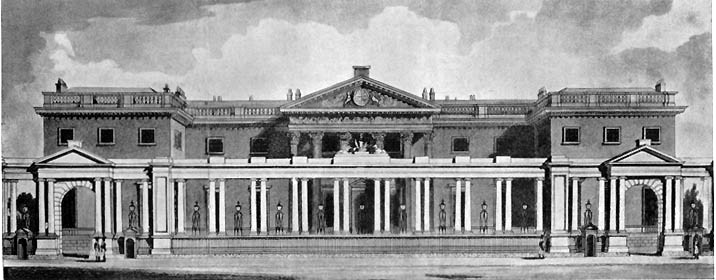
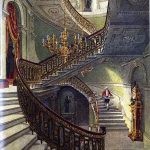
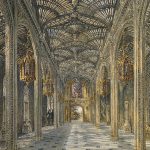
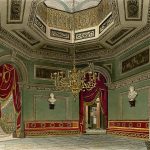
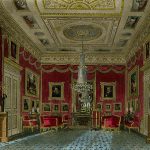
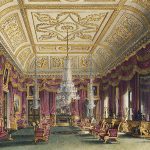
Thank you for inviting me to your wonderful blog!
Another lost palace was Woodstock. Which is sadly entirely lost and gone. It was near the site of Blenhiem palace, and one of the greatest in Medieval and early modern England, which played host to monarchs and prominent people from Richard the Lionheart to Elizabeth I. It sort of went into ruin afer the 1600s, and was finally demolished in the late 1700s. So sad, what a wonderful place even the ruins would have been to see!
http://www.bbc.co.uk/oxford/content/articles/2007/10/17/glyme_feature.shtml
Fascinating! I’ll have to read more about this. PJK
Yes, I’d love to go there. By the way, when’s your new book out?
It will be out before Christmas this year – stocking filler! X
Yay! Maybe one day I should track you down and get you to sign a copy.
Yays! Yays! Yays! Three great books out before Christmas. Now all I have to do it get mine finished.
Oh, well I hope it all goes smoothly. Writing is not always the easiest of tasks, but it isn’t half satisfying!
I shall have to look into that!